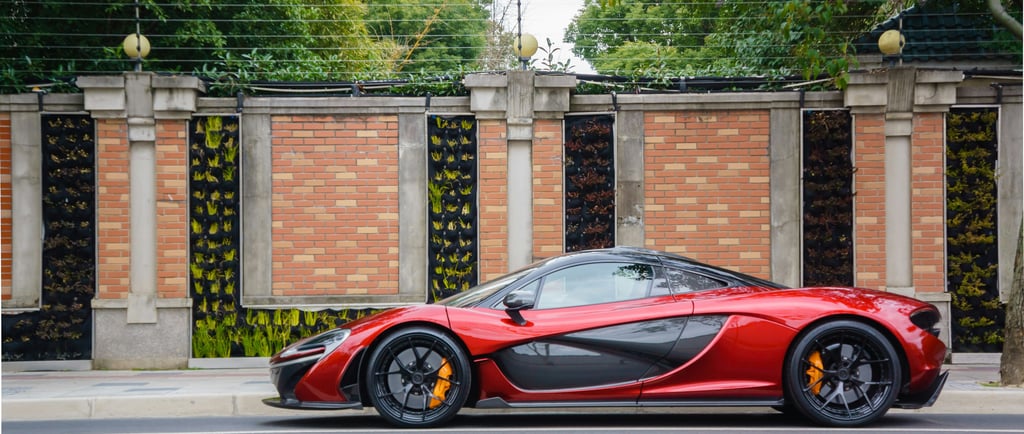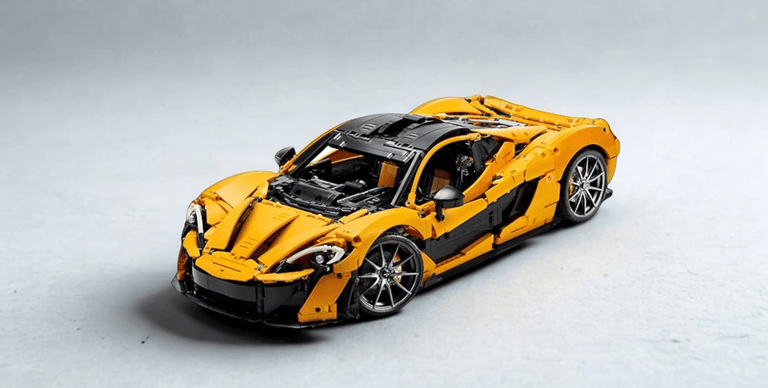McLaren P1 Lego Car: The Hybrid Hypercar That Redefined Speed
The McLaren P1 is one of the most revolutionary cars ever produced by the British brand. Launched in 2013, it combined McLaren's Formula 1 racing heritage with the most advanced hybrid technology for the road. With only 375 units produced, boasting a futuristic design and over 900 horsepower, the P1 is not just a sports car: it is a feat of engineering that has marked the history of collectible hypercars.
LEGO CARS
Driven Vault
8/26/20252 min read


History and Origin of the Model
The McLaren P1 was unveiled at the 2012 Paris Motor Show as the spiritual successor to the legendary McLaren F1 of the 1990s.
The brand's vision was clear: to create the ultimate hypercar, capable of shining on both the road and the track. In 2013, the first units reached lucky buyers, marking a new era for hybrid supercars.
The P1 was part of the so-called "Holy Trinity of hypercars," alongside the Ferrari LaFerrari and the Porsche 918 Spyder, which revolutionized performance by incorporating hybrid systems into ultra-high-performance cars.
Cultural Impact and Exclusivity
The McLaren P1 quickly became one of the most sought-after cars in the world. With a limited production run, every unit was sold out even before its official launch, reinforcing its exclusivity.
The hypercar has been featured in several racing games, such as Forza Motorsport, Gran Turismo, and Need for Speed, and has also appeared in the collections of major celebrities, including Jay Leno and Floyd Mayweather.
Rare Trivia
Race Mode: When activated, the car lowers 50 mm, the wing adjusts, and the P1 transforms into a true street-legal track car.
Short Electric Range: Despite being a hybrid, its battery only offered about 10 km in all-electric mode—because the focus was never on economy, but rather performance.
F1 Inspiration: The P1's hybrid system was directly inspired by the KERS system used in McLaren's Formula 1 cars.


Design and Engineering
The McLaren P1 was designed with a focus on active aerodynamics and extreme performance.
Visual and technical highlights:
Futuristic lines: inspired by race cars and optimized in a wind tunnel.
Retractable rear wing: automatically adjusts to generate up to 600 kg of downforce.
Butterfly doors: a McLaren signature, offering a striking visual and unique access.
Minimalist interior: entirely driver-focused, with lightweight seats and a driving position similar to a race car.
The P1's engineering showcased the latest technology: a twin-turbo V8 engine combined with an electric motor, a Formula 1-inspired KERS system, and an ultralight carbon fiber chassis.
Technical Specifications
Engine: 3.8L V8 twin-turbo + electric motor
Combined power: 916 hp
Torque: 900 Nm
0–100 km/h (0–62 mph) time: 2.8 seconds
Top speed: 350 km/h (electronically limited)
Transmission: 7-speed automatic
Weight: ~1,490 kg
Production: only 375 units
Launch price: approximately US$1.1 million
Current auction value: could exceed US$2.5 million
The McLaren P1 is a landmark in automotive history. It not only demonstrated that hybrid technology can be synonymous with extreme performance, but also solidified McLaren among the select group of legendary hypercar manufacturers.


